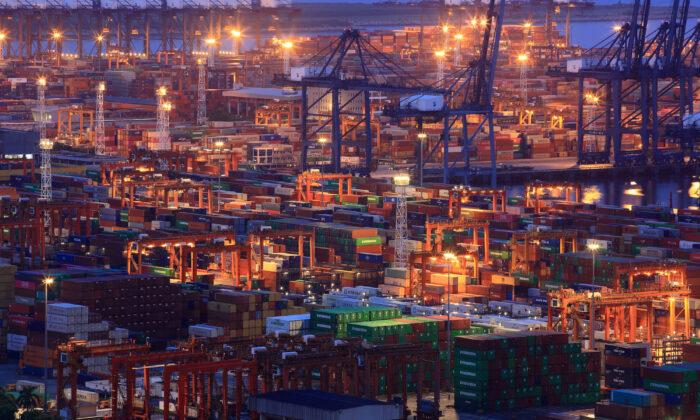BEIJING—China’s exports likely fell at a slightly faster pace in September as softening global demand and U.S. tariffs bit more deeply, while imports shrank for a fifth straight month, suggesting pressure on the economy is increasing, a Reuters poll showed.
More U.S. tariff measures against China are set to take effect on Oct. 15 and Dec. 15, unless the two sides can reach an agreement to de-escalate their protracted trade war in negotiations in Washington this week.
Hopes are growing for a partial deal that would at least delay a planned U.S. tariff increase next week.
China’s September exports are expected to have fallen 3 percent from a year earlier, according to the median estimate of 28 economists in the poll, worsening from a 1 percent drop in August.
Last month marked yet another escalation in the Sino-U.S. trade dispute, with Washington starting to collect 15 percent tariffs on more than $125 billion in Chinese imports from Sept. 1, while Beijing hit back with retaliatory levies.
Analysts largely attributed the gloomy forecast for Chinese exports to weakening global demand and the fading of the so-called “front-loading effect.” Some Chinese companies had rushed to ship goods to the United States ahead of the September deadline, supporting headline export readings in July and August.
Fitch Ratings said in a recent report that it expected export-oriented Chinese technology companies to remain under pressure as customers moved their supply chains away from China.

Domestic Demand Still Weakening
Imports, meanwhile, are likely to remain in contraction, shrinking 5.2 percent from a year earlier, versus a 5.6 percent decline in August, the poll showed.The forecast pointed to still softening domestic demand, as more than a year of stimulus measures have failed to put a floor under sliding economic growth.
“The recent slowdown in imports can only be partly explained by lower commodity prices. Indeed, imports of high-tech products and other goods have slowed even more sharply than those of major industrial commodities,” said analysts with Capital Economics.
Analysts expect economic growth could cool further this quarter from a near 30-year low of 6.2 percent hit in April-June, and say more policy support is needed, especially if U.S. tariffs proceed and cover virtually all remaining Chinese imports in coming months.
“Assuming no trade deal and all announced tariff hikes take place, we see GDP growth slowing further in Q4 and next Q1 before a modest rebound in Q2, bringing 2020 GDP growth to 5.5 percent,” said UBS analysts in a research note.





